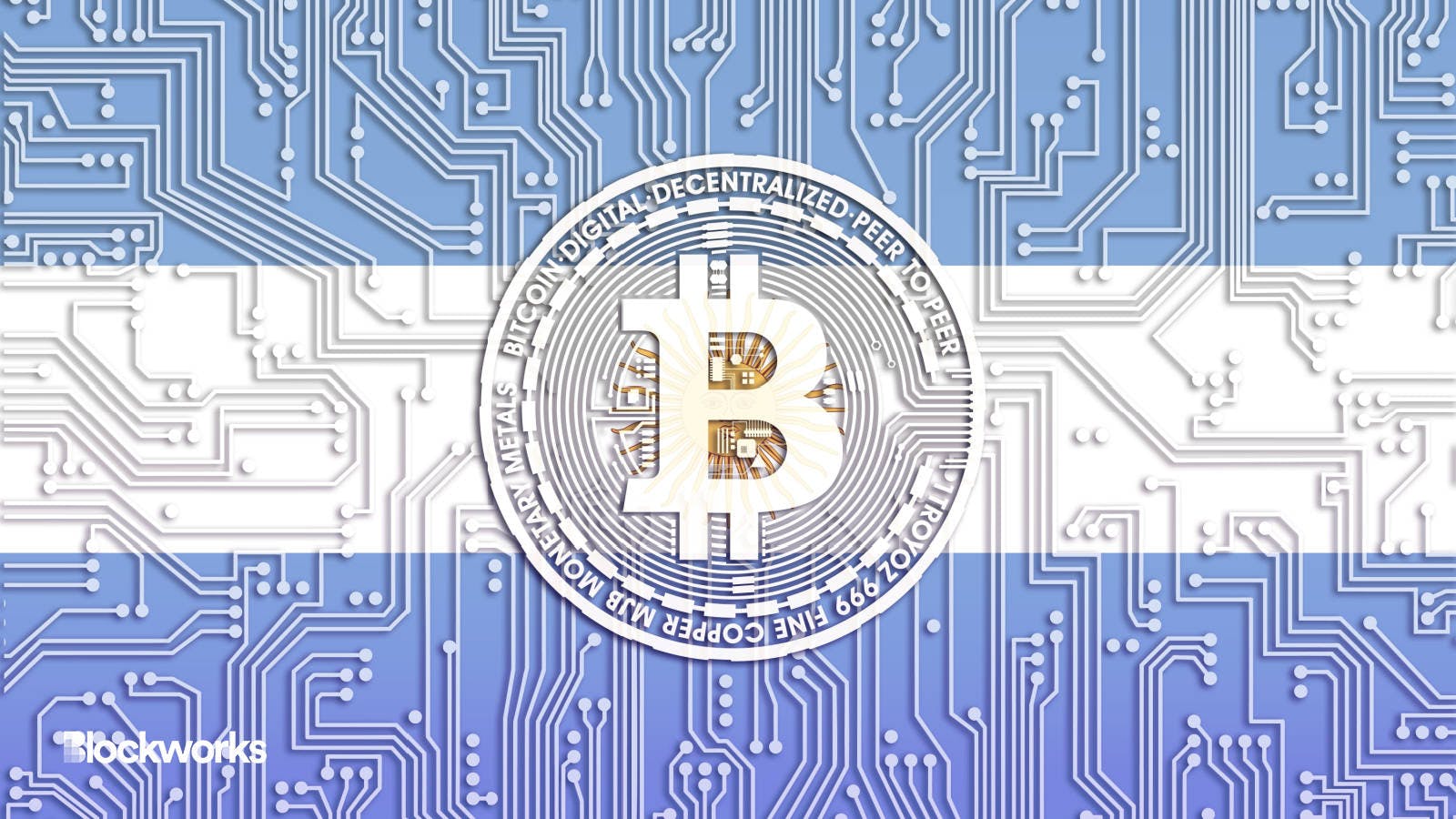Binance Opens Argentina Fiat On-ramps as Inflation Hits 100%
Binance has launched its on-ramp and off-ramp in Argentina, giving locals a way into digital asset markets

Maxim Studio/Shutterstock, modified by Blockworks
Binance has opened up fiat ramps in Argentina, where the inflation rate has surged above 100% for the first time in three decades.
Local users can now load their Binance wallets with Argentinian pesos and trade a small selection of cryptocurrencies via the app: bitcoin, ether, BNB and EOS, as well as dollar-pegged stablecoins BUSD and tether (USDT).
Binance so far only had limited operations in Argentina and doesn’t yet offer peso pairs on its crypto exchange.
Due to high inflation, prices for goods and services across the country reportedly keep fluctuating almost every week, meaning peso-denominated crypto price quotes are likely to change frequently.
Binance’s wallet also supports dozens of international currencies, including the Turkish lira, Venezuelan bolivar and Afghan afghani.
Dollar-pegged stablecoins have proven useful in economies suffering from severe currency devaluation. But crypto purchased with Argentine pesos (ARS) seems to come with a steep price tag. Binance’s wallet currently sells BTC for 11 million ARS ($52,000) — nearly double the spot price on Binance’s US platform.
Peso-holders will spend 749,000 ARS ($3,546) for ETH, while US users will pay only $1,899. BNB and EOS have the same price differences, as do USDT and BUSD, which go for $1.85 each.
When asked about the difference, a Binance spokesperson told Blockworks that within Argentina itself, there are different exchange rates than the “official” figures shown by the likes of OANDA.
Argentine markets don’t use the official figures, they said. Instead, they use parallel market rates: “In the specific case of Argentina, when exchanges calculate prices, the stock exchange dollar is used as a reference.”
Nigeria sees similar disparities between the official exchange rates and international bitcoin prices. There’s no realistic arbitrage opportunity for regular traders (they would first need access to US dollar markets at the official rate), so the price difference shouldn’t exactly be considered a “premium.”
In any case, Maximiliano Hinz, an Argentina-based Binance director for the Latin American region, told Reuters that the move was prompted by public demand and noted that Argentina is a key market for the company.
Binance under fire
Binance launched a crypto prepaid card in partnership with Mastercard in Argentina last year, enabling users to make purchases and pay bills using crypto.
Younger people in the country view crypto as a way to bolster their savings after decades of losing trust in the government. Argentina recorded the 13th highest rate of adoption in the world in 2022, according to Chainalysis.
“For a long time, Argentina has positioned itself as an important crypto market. People have always been very interested, there have been very good projects, and this has allowed the increase in adoption. Today, the crypto world brings solutions to people’s daily lives,” Binance’s Hinz said at a recent event.
Binance is currently faced with litigation from the CFTC, which alleges that the exchange broke trading and derivatives rules.
CEO Changpeng Zhao, who has an estimated net worth of $30 billion, has pushed back against the allegations, saying the complaint contained an “incomplete recitation of facts” and that the exchange doesn’t agree with the characterization of the issues outlined.
Earlier this year, BUSD issuer Paxos began unwinding its relationship with Binance after receiving an SEC Wells notice over the dollar-pegged stablecoin.
Now, it’s on offer to Argentina.
David Canellis contributed reporting.
Get the news in your inbox. Explore Blockworks newsletters:
- The Breakdown: Decoding crypto and the markets. Daily.
- 0xResearch: Alpha in your inbox. Think like an analyst.






